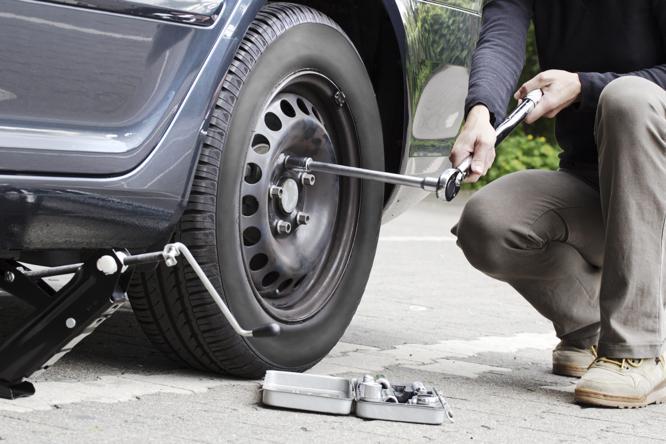Safety, Safety, Safety: three simple words easily accomplished by looking at the tread patterns of your tires. Of course, seatbelts can be worn and the oil checked, but a quick look at your tires can save hundreds or even thousands of dollars with only a few minutes of time.
Tire wear can occur for a multitude of reasons on your car. Before you look at the tread, check the side of the tire. The writing and codes on the tire can provide key information to determine when and what tires to replace your old ones with.
The average tire has a life of about ten years, but this rarely occurs when actually driving the vehicle. Each tire has a manufacturer’s date which should be checked before purchase. One never knows how long a tire could be sitting around in the plant or in the store you are buying it from. To determine the manufacturers date, look for four letters. The first two letters are the numerical week it was created and the last two numbers are the year. So if a tire says 2210 it actually means it was made on the 22nd week of 2010.
Inflation Issues
When the tire is over inflated it causes the middle of the tire to wear the fastest. This occurs because the center of the tire pumps up the most (where the inner tube is located) and pushes on the ground the hardest. This is one of the easiest problems to fix because you just need to check the pressure recommendations on the side of the tire. Vice versa, if the tire is under inflated, the edges might be a little more worn because the center is the least inflated, however this would be very noticeable as the tire would not maintain a nice rounded look when at a standstill.
Toe Wear and Camber Wear
Wear can also be seen on just the inner edge or just the outer edge of a tire. In these cases you can have toe wear or camber wear. Camber wear typically occurs because your wheel alignment is off and the tire is not sitting flat like it should. This can often warp the tire and cause excessive wear on just one side. Rotating the tire after excessive wear can still be dangerous because the tire remains a little distorted. Toe wear is the less extreme case of camber wear and can occur on the inner or outer edge. If either of these conditions is met, it would be best to see a mechanic to look at your tie rods and ball joints. Positive camber is when the top of the tire leans away from the vehicle and negative camber is when the tire leans toward the vehicle.
Cupping Wear
When diagonal wear marks are exhibited on your tire, known as cupping wear, your suspension is off. Suspension problems give rise to three possible problems: a worn suspension, bent, or even compromised suspension that could break and cost even more money. This problem calls for a mechanics appointment immediately. Cupping may occur in a few places or all over the tire; sometimes tire noise will also increase, but if you haven’t checked the tires in a while you may not notice a difference at all.
Patchy Wear
The national Highway Traffic Safety Administration urges people to have their tires rotated at about every 5,000 miles of driving. This will help equalize your tire and the tire pressure on the road. By rotating, tires will have a chance to deal with different forces put on different sides of the car. For example, front wheel drive tires experience more tire wear due to turning ability and tire power/spin at the front end. Rotating them with the back wheels will change the stress they experience because they are now stationary and can’t easily spin and burn rubber. Rotation is typically free at the place of purchase and fairly easy to do at home. One of the most frequent upkeeps for a car, rotating saves a lot of money and wear on your car over time.
The next time before you head out on a job or vacation, take a quick look at your tires. There are typically only four of them, and that rubber and air is the only thing separating you from the ground.
This article was written by Josh McCarthy, a professional writer for LinearAutomotive.com. Josh is a skilled blogger with multifaceted abilities.
















